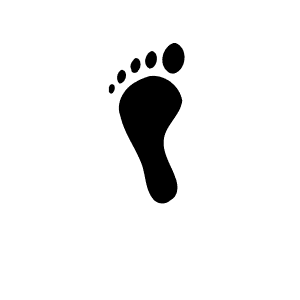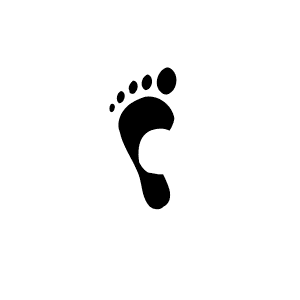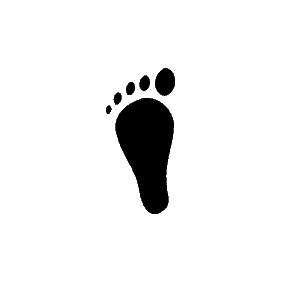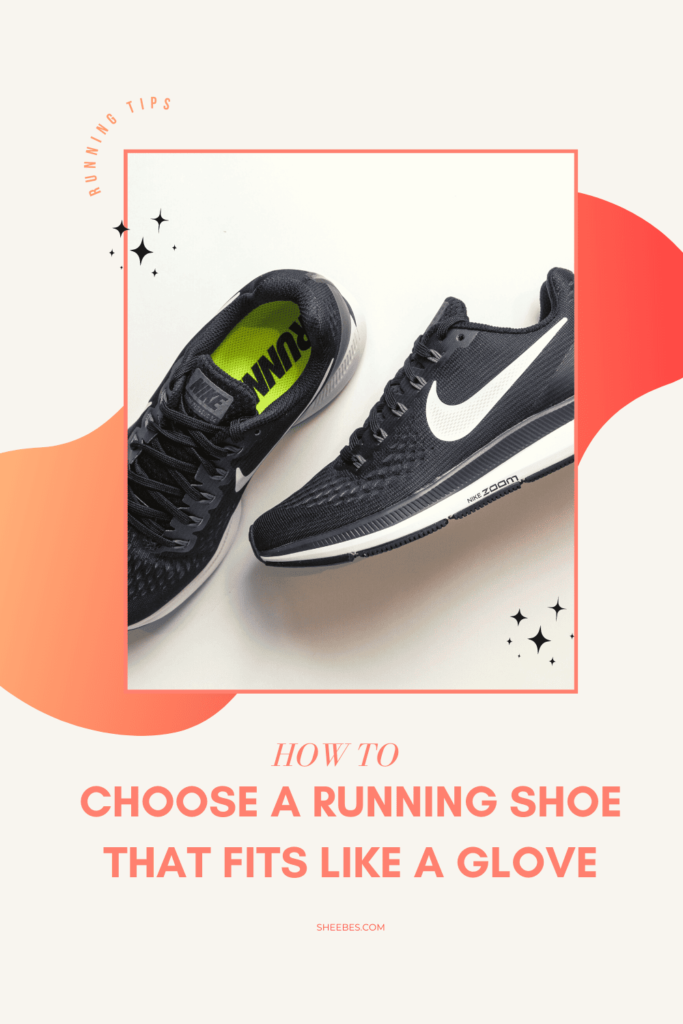Imagine you’re at a running store staring at a wall of running shoes.
Which running shoes should you get? Should you spend hours at the store trying to find the perfect pair?
You could, but there’s a better way.
Navigating the sea of running shoe options can be overwhelming, but this post is here to help you narrow your running shoe options so you can shortcut the time it takes to find your ideal pair.
Let’s get started.

Whether you’re a runner looking for running tips or a cyclist searching for cycling advice, this site is here to help you elevate your fitness game.
Affiliate Disclosure: I’m here to help you grow as a rider and runner. So to keep things running smoothly and the content free, I participate in the Amazon Services program and select affiliate networks. So, when you click on those affiliate links, I earn a small commission at no extra cost to you.
HOW TO CHOOSE RUNNING SHOES
The best running shoes for you are one that checks all your boxes—one that feels comfortable and provides support and stability so you can run without discomfort and dodge injury.
We’ll dig into more detail in this post, but for now, keep these questions in mind as you choose a running shoe.
- What’s your training history? Are you a new runner or have you been running for years?
- What kind of running do you do? Do you run on roads or trails? Or will you be running on a treadmill?
- What are you training for? You may need shoes with more cushioning if you’re training for a half marathon or marathon.
- Do you have any existing injuries?
- How do you want your shoes to feel? Do you want to feel like you’re running on clouds? Or would you like to feel like you’re connected to the road?
- What’s your running gait? Don’t sweat it if you don’t know the answer to this right now. We’ll talk more about this later in the post.
HOW TO PICK RUNNING SHOES THAT ARE PERFECT FOR YOU
Let’s talk about the language you’ll hear as you shop for running shoes—pronation.
Pronation is a fancy word that describes the way you walk or run.
When you’re walking or running, your foot should ideally transfer the landing impact from the heel to the balls of your feet.
When you overpronate, your foot rolls inward toward your opposite ankle. And when you underpronate, your foot rolls outward with each step.
Now, why does this matter so much?
Here’s the deal:
- Your pronation type determines how much support and stability you need in your running shoes. It’s the key to picking a running shoe that ensures your feet get the stability and support they crave during your runs.
- When your shoes match your pronation type, they can help prevent common running injuries. For overpronators, it’s about controlling that inward roll with some extra support. And for underpronators, extra cushioning helps absorb the impact.
- Proper running shoes can make sure your running gait is on point, which means smoother strides and better overall performance.
- Shoes that cater to your pronation type fit like a glove—no more rubbing or discomfort.
So where should you get fitted for running shoes? And how should you figure out your pronation type? We’ll talk about that next.
WHERE TO GET FITTED FOR RUNNING SHOES
When it comes to getting fitted for running shoes, below you’ll find four ways to help you find the best running shoes for you.
Physical therapy gait analysis
Physical therapists aren’t there to patch you up after a running injury; they’re also there to give tips on your gait and injury prevention.
Because physical therapists are experts in movement, look for a physical therapist if you want the most comprehensive gait analysis.
A physical therapist can assess how you walk or run and pinpoint imbalances that might lead to running injuries.
Running store treadmill running gait analysis
Your neighborhood running store can give you a treadmill running gait treadmill analysis. (And you might even find some of the best running accessories there too.)
You’ll lace up your running shoes and hop on the treadmill for a minute or two. While you’re busy working up a sweat, the experts will record your gait to analyze and reveal the best running shoe for you.
Here’s what they’re looking at:
- Foot strike: How does your foot meet the ground when you walk or run? Are you a heel striker, a midfoot striker, or maybe a forefoot striker?
- Pronation: Now, let’s talk about your pronation style. Are you a neutral pronator (nice and balanced), an overpronator (rolling inward too much), or a supinator (rolling outward)?
- Stride length: It’s time to measure those strides—are yours short or long?
- Cadence: How many steps do you take per minute? A higher cadence (more steps) means you’re moving efficiently and dodging injuries.
- Knee and hip alignment: Are your knees and hips in sync?
- Vertical oscillation: How much do you move up and down when running? Ideally, you’d want minimal vertical movement for the most efficient running form.
- Ground contact time: How much time does your foot spend on the ground with each step? Shorter contact time equals efficient running and leaving overuse injuries in the dust.
- Trunk and pelvic movement: How do your trunk and pelvis move as you walk or run?
- Arm swing: How are your arms moving naturally when running? Are they swinging back and forth? Or are they crossing over your center?
Wet footprint gait test
Rather figure things out on your own? Try this wet footprint test. You’ll need a bucket of water and a piece of dark tile or brown paper.
Now place your dark tile or paper on the ground, dip your feet into water, and leave your mark.
What does your footprint tell you?
Does it look like this:
You have neutral pronation if your footprint shows a noticeable curve in your arch.

You have a high arch if you have a narrow band or none at all between the ball of your foot and your heel. You may underpronate, which means your foot rolls outward.

You have a low arch if you don’t have a pronounced arch curve. You may overpronate, which means your foot rolls toward your opposite ankle.

Gait test with your old walking or running shoes
Have a look at the soles of your old walking or running shoes. The wear pattern on the soles of your shoes will tell you how your foot moves.
Do you see a lot of wear on the outside of the sole? You’re probably an underpronator. On the inside of the sole? You’re likely an overpronator.
Now that you’re armed with the knowledge of your running gait, let’s look at the types of running shoes for you.
THE DIFFERENT TYPES OF RUNNING SHOES TO SUIT YOU
Whether you have neutral pronation, overpronation or underpronation
The best running shoes for neutral pronation
You won’t need extra support or correction as a neutral pronator. That means the best running shoe for you will have neutral support that won’t interfere with your natural stride.
Neutral running shoes are generally lighter because these shoes won’t have to give you extra correction, but they will still vary in comfort, materials, and road feel.
The best running shoes for neutral pronation:
The best running shoes for overpronation
Your go-to running shoes as an overpronator are stability shoes. Because your feet roll inward when they hit the ground, you’ll need running shoes that give you a touch more stability and support.
With stability shoes, you’ll also get arch support, a sturdy heel counter to support your heel, and a stable base.
The best running shoes for overpronation:
The best running shoes for underpronators
If your feet roll outward when hitting the pavement, the best running shoes should give you cushioning and flexibility.
Like neutral pronators, you’ll also look for neutral running shoes. The difference is you’ll want to gravitate toward running shoes that have cloud-like cushioning in the midsole to absorb impact and support your outward rolling motion.
You’ll also want a flexible outsole so your feet can move naturally. And look for running shoes that give you medium arch support for comfort and stability.
The best running shoes for underpronators:
THE FIT TEST: HOW TO FIND THE MOST COMFORTABLE RUNNING SHOES
Now that we’ve narrowed your running shoe options to support your running foot strike, let’s jump into how a running shoe should fit so you can find the most comfortable running shoes for you.
Tip #1
Timing is everything when shopping for running shoes. Head to the store (or try the shoes you’ve bought online) in the afternoon for the most accurate fit. That’s because the afternoon is when your feet are at their largest, giving you a better idea of how the shoes will feel during your runs.
Tip #2
With your running shoes on, stand tall and check to see if you have a thumbs width of room between your big toe and the top of the running shoe box. Your feet will naturally move toward the toe box as you’re running, so you want to make sure you have enough wiggle room to move about without feeling constrained.
Tip #3
Next, it’s time to put those running shoes to the test.
As you hit the pavement, pay close attention to any signs of rubbing, pinching, or squeezing.
Avoid shoes that cause discomfort in these ways, as they can lead to painful blisters and dampen your overall running experience.
Focus on the fit around the heel area; it should feel secure and snug for optimal stability. A well-fitted heel prevents slipping and ensures your foot stays properly aligned during your stride.
Now, let’s talk cushioning—the key to a comfortable and enjoyable run.
Do you prefer running on pillowy clouds, with plush cushioning offering maximum impact absorption?
Or do you want a more responsive feel, where you’re more connected to the road?
Finding the right balance of cushioning is essential because it will directly affect your running experience.
How do the shoes respond to your movements? Look for running shoes that support your natural gait and feel like an extension of your feet.
And finally, trust your instincts and choose the pair that feels like it was custom-made for you. Every runner is unique, and finding the perfect fit is a personal journey. So when you finally find that ideal pair, you’ll be looking forward to the countless miles ahead.
Are you ready to take those new running shoes for a spin? I’ve created a free workbook that will help you build your running habit and stick with it for good. Grab it now!
